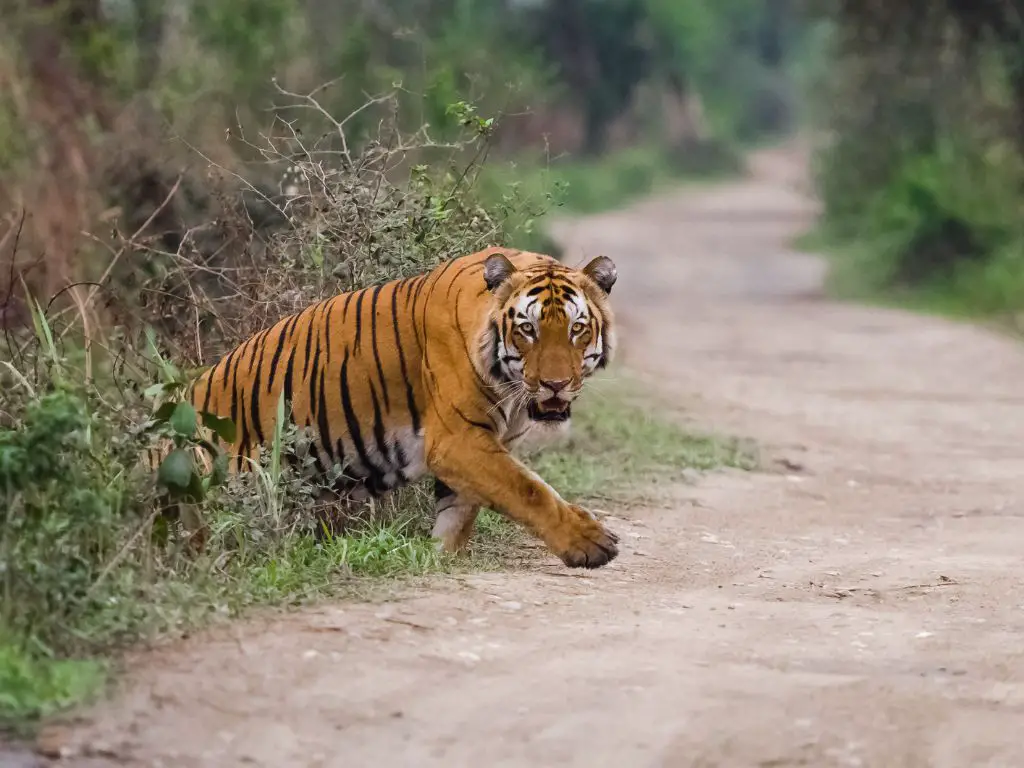Bengal tigers, also known as Indian tigers, are listed as endangered on the International Union for Conservation of Nature (IUCN) Red List of Threatened Species. In order to save bengal tiger from extinction, we first need to understand why are bengal tigers endangered so that the reasons for their endangerment can be addressed on priority basis.
Why are bengal tigers endangered
Bengal tigers are one of the most iconic and beloved animals on our planet. Unfortunately, they are also considered to be critically endangered due to a number of factors. The primary reason why Bengal tigers have become so endangered is due to human activities such as poaching, habitat loss, and climate change.

10 reasons why bengal tigers are endangered
-
Habitat loss:
Bengal tigers rely on large, contiguous areas of habitat for survival, and the loss of these areas due to deforestation, development, and other human activities is a major threat to the species.
-
Poaching:
Bengal tigers are hunted and killed for their body parts, which are highly valued in traditional medicine and as luxury goods. Poaching is a significant threat to Bengal tigers, as it reduces the number of breeding individuals and disrupts the social structure of tiger populations.
-
Human-tiger conflict:
As human settlements and activities encroach on tiger habitat, the animals may come into conflict with humans, leading to retaliation or efforts to control their populations.

-
Climate change:
Changes in temperature and rainfall patterns caused by climate change can affect the availability of prey for Bengal tigers and the suitability of their habitat.
-
Limited genetic diversity:
Small, isolated populations of Bengal tigers may have limited genetic diversity, which can lead to inbreeding and other problems that can affect the health and viability of the population.
-
Disease:
Bengal tigers may be affected by a variety of diseases, including viral infections, parasites, and other health issues that can impact their survival.
-
Competition with other species:
In some cases, Bengal tigers may compete with other species for resources, such as prey or habitat, which can negatively impact their populations.
-
Lack of effective conservation measures:
In order to protect Bengal tigers and their habitat, it is important to implement effective conservation measures. However, these measures may not always be in place or may not be sufficient to address the threats facing the species.
-
Political instability and lack of resources:
In some regions where Bengal tigers live, political instability and a lack of resources may make it difficult to implement effective conservation measures.
-
Lack of awareness and understanding:
Many people may not be aware of the threats facing Bengal tigers or the importance of conserving these animals. This can make it difficult to mobilize support and resources for conservation efforts.
When did bengal tigers become endangered
Bengal tigers have been listed as endangered on the International Union for Conservation of Nature (IUCN) Red List of Threatened Species since the 1970s.
How many bengal tigers are left

According to the most recent estimates, there are approximately 2,500 Bengal tigers remaining in the wild, with the majority of these animals found in India. This number is dwindling due to a variety of factors such as poaching and habitat destruction. As a result, conservation efforts have been put into place to try and protect this species from extinction.
What happens if bengal tigers go extinct
If Bengal tigers were to go extinct, it would have significant ecological and societal impacts. Bengal tigers are a keystone species, meaning that they play a central role in the functioning of their ecosystem and the survival of other species. The loss of Bengal tigers could lead to a cascade of negative effects on the plants and animals that depend on them, potentially disrupting the balance of the ecosystem.
In addition to the ecological impacts, the loss of Bengal tigers would also have cultural and economic consequences. Bengal tigers are an important part of the cultural heritage of many countries in the region and are a major attraction for ecotourism. The loss of the species would likely have a negative impact on local economies that rely on ecotourism.
It is important to prevent the extinction of Bengal tigers and other endangered species in order to maintain the integrity and functioning of ecosystems, preserve cultural heritage, and support sustainable economic development. Conservation efforts are necessary to protect and restore populations of endangered species, including Bengal tigers.

Steps taken by Indian government to protect tigers
The Indian government has taken a number of steps to protect tigers and their habitat. Some of the measures that have been implemented include:
Establishing protected areas:
The Indian government has established a network of protected areas, including national parks and tiger reserves, in order to protect tigers and their habitat. These areas are managed by the government and are off-limits to human activities such as development and resource extraction.
Implementing conservation policies:
The Indian government has implemented a number of conservation policies and laws in order to protect tigers and other endangered species. These policies include the Wildlife Protection Act of 1972, which provides legal protection for tigers and other wildlife, and the Project Tiger initiative, which was launched in 1973 to protect and restore tiger populations.
Combating poaching:
The Indian government has taken steps to combat poaching, including strengthening laws and penalties related to the illegal trade in tiger parts, increasing resources for anti-poaching efforts, and working with local communities to reduce demand for illegal wildlife products.
Restoring habitat:
The Indian government has implemented a number of initiatives to restore and protect tiger habitat, including reforestation and habitat restoration projects, and the establishment of corridors to connect isolated populations of tigers.

Research and monitoring:
The Indian government has supported a number of research and monitoring programs in order to better understand the status and needs of tiger populations. This information is used to inform conservation efforts and guide decision-making related to the protection of the species.
Saving The Bengal Tigers
In order to protect this species from further decline, governments must take action by implementing stricter laws against poaching and investing more into conservation efforts that focus on preserving remaining habitats while creating new ones through reforestation projects or other initiatives designed specifically for Bengal tigers’ needs.
Additionally, organizations like World Wildlife Fund (WWF) have been working hard towards raising awareness about this issue so people around the world understand why we need immediate action if we want future generations of children be able to experience seeing these magnificent cats still living out there in nature instead of only being able observe them behind bars at zoos or animal parks .







Leave a Reply